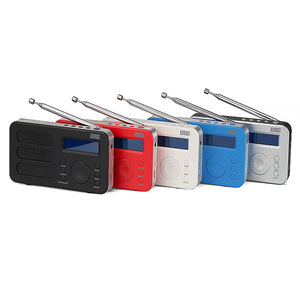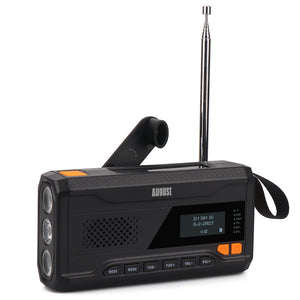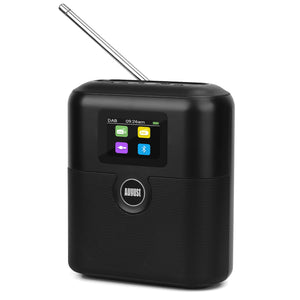Since the inception of DAB digital radio both DAB and FM have been widely used for radio entertainment. From your car radio to hifi stereo systems, DAB and FM radio are everywhere and provide an accessible, free way to enjoy hundreds of stations and music styles during all hours of the day.
When you have signal, that is! If you're finding that your signal and reception are consistently bad with DAB and FM radios then you may need to re-acquaint yourself with the tech, making sure to account for the science behind the technology you use!
Retune and boost your radio signal with this complete guide;
How to tune FM Radio
Firstly, let's focus on the progenitor to the fancy modern DAB radio. FM Radio stands for Frequency Modulation and is strangely both easier and more difficult to tune...
FM Radio works by having radio stations assigned to individual frequencies, and the radio itself can be manually tuned to any single frequency at one time. This is usually done via a dial or wheel, so you can easily spin the wheel and watch the frequency number change.

For example, how to tune radio 4 FM? First you'd identify the frequency that Radio 4 is broadcast on. At time of writing, that's between 92.5 and 96.1. By moving your dial until within that frequency range you will automatically set the radio to tune in to the station.
The act of browsing stations is, in itself, retuning the radio. Every time you see the display change you are enforcing a change of tuning for the device itself. This means that you never need to "re-tune" an FM Radio! An FM radio is constantly looking for signal and will tune to whichever frequency you have set!
However, because a "full scan" isn't possible, only changing frequency manually or through pre-sets, FM radio is much harder to navigate at speed compared to DAB.
How to Tune a DAB Radio
Secondly, a DAB Radio is very different to tune to FM. While an FM radio tunes to each station as you scroll, relying on your own knowledge of frequencies, DAB takes control of the full process!
DAB radios need to perform a "Full Scan" or "Auto Scan" when first used. This is already different to FM radio, and this initial scan provides the DAB radio a complete overview of the entire radio range.

This means that station names and frequencies are scanned, seen and saved all in one go! Instead of scrolling frequencies manually you simply choose the station you want by name and the radio already knows where to tune in to from the initial scan.
For example if you wanted Radio X you can open the station list and scroll through until the actual name Radio X is displayed, with no thinking about frequencies and ranges. Smart!
How to Boost Radio Reception
Despite the differences between how DAB and FM radios scan, tune and re-tune the methods to improve signal and reception in your radio are remarkably similar.
After all, both devices use radio waves to get you your music!
When your DAB radio keeps losing signal or your FM radio is full of static, try these steps:

1. Physically adjust the aerial
There's more to the aerial than simply having it attached. When using a telescopic aerial ensure the aerial is fully extended for maximum reception. If problems persist or your aerial doesn't extend then physically rotate / point the antenna in different directions.
Remember to change station / retune in between moving the aerial to ensure the radio has scanned from the new position!

2. Reach Higher Ground / Check Your Surroundings
Radio signals propagate over huge distances through the air. However the ground, trees, dense housing and other radio signals can all interfere as the waves travel! A common culprit for low reception is natural blockages such as hills and valleys. Similarly, dense housing and thick walls can also severely limit radio reception. If you notice your area has potential interfering factors you can try the radio somewhere with higher visibility, near a window and higher altitude.
3. Scan Incrementally Through Frequencies (FM Only)
If your FM radio is giving out static or grainy audio you have more freedom to explore frequencies than with DAB. Since DAB is digital you either receive a data stream or do not. FM is less binary, and so you may need to "tweak" your frequency.
For example when tuning to Radio 4 above we needed between 92.5 and 96.1. This means that if you are receiving poor audio or no signal at 92.5 you are able to scan up in small increments all the way until 96.1. Somewhere in that range as you change frequencies you may find a superior frequency for the station!
4. Check for an "Aerial Power" Mode
Some devices like Televisions or Radios, which rely on aerial reception to work, have an inbuilt option called "Aerial Power" or sometimes "Aerial Boost". This setting will draw power form the radio itself and use it to add some gain to the aerial. There's a limit to the effectiveness of this options, and the power increase won't match a dedicated amplified aerial booster, but it's an option to consider nonetheless.
Telescopic Aerials for the Best Reception
When browsing for a DAB or FM radio, the aerial is the most vital component for reception. You can have the fanciest speakers on the planet, but they can only play what the aerial picks up! Therefore ensuring the radio has a rotatable and extendable aerial gives you the best control over your signal loss. You can fix the reception yourself by rotating and extending the aerial this way, rather than being stuck without music and news!
August International manufacture the UK best-selling aerial DTA240 for Freeview TV, so their aerial technology is up-to-scratch. The following radios all feature telescopic aerials and both FM and DAB reception so you have all the best chances of getting signal wherever you are:





Leave a comment